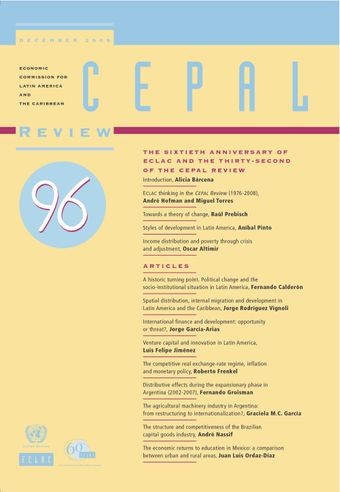-
Spatial distribution, internal migration and development in Latin America and the Caribbean
- Source: CEPAL Review, Volume 2008, Issue 96, Dec 2008, p. 137 - 157
- Spanish
-
- 07 Dec 2008
Abstract
An examination of the links between migration and development using census micro data for 15 Latin American countries reveals that: (i) internal migration is diminishing, which was not foreseen in the specialist literature, (ii) internal migration, while apparently helpful for individuals and beneficial for successful regions, erodes the human resources of poorer regions, and (iii) as a result of increasing urbanization, urban-urban migration is replacing rural to urban migration as the predominant flow and other types of migration are on the increase, an example being intrametropolitan migration which, unlike the traditional kind, is driven by residential and not occupational factors. Where policy is concerned, the governing principle is freedom of movement within a country’s borders, without restrictions or resettlements. Governments have to resort to incentives and indirect measures if they wish to influence migration decisions; however, local measures and regulations do influence intrametropolitan migration choices.





